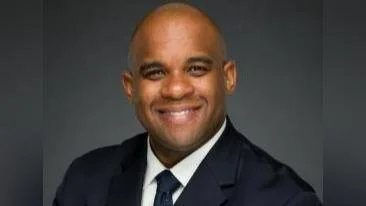Adler Steven H. Commitee To Elect issued the following announcement on July 24.
The 54-acre manmade Centennial Lake is a popular spot for fishing and boating. It’s also getting more shallow.
Officials from Howard County’s Department of Recreation and Parks have been saying it’s time for the Columbia lake, created in the 1980s by damming a branch of the Little Patuxent River, to get a good cleaning to remove silt and sediment.
Since 2000, the department has included a capital project in its annual budget request to fund the dredging and cleaning of the lake.
Each year, the project has been pushed aside.
“It’s an important project that we can’t continue to ignore,” said John Byrd, the department’s director. “It’s going to be a long, interruptive kind of project, so it’s kind of one you want to get over with.”
Howard County Executive Allan Kittleman proposes the county’s annual capital budget and defers to department heads for their list of priority projects, according to an aide, Paul Milton. If or when the department said it was vital that the lake be cleaned, the county executive would give the project “serious consideration,” Milton said.Byrd said that while the department has made plans to start the cleaning project for years, because the sediment buildup does not present an immediate environmental or health threat to lake users, it has been repeatedly passed over for more vital projects.
This year, in order to free up more funds for projects such as construction at Troy and Blandair parks, the lake fell down on the priority list.
A cleaning is necessary, according to Byrd, because over time, sediment builds up on the bottom of the lake that reduces its depth. So much sediment has built up that Byrd said the lake has lost nine feet of depth. At its deepest the lake was 25 feet.
Whenever it is completed, the project is estimated to cost between $6 million and $10 million and the lake could be closed for four to six months, according to Byrd.
Researchers from Coastal Environmental Services Inc. conducted a study in 1995 and recommended the lake be dredged, artificially aerated and its shoreline stabilized. The last survey of the lake’s topography was completed in 2006, showing an increase in sediment.
Sediment builds up in manmade lakes as a result of erosion and runoff, according to Upal Ghosh, a chemical, biochemical and environmental engineering professor at University of Maryland Baltimore County.
“As that happens over years and decades, the sediments build up behind the dam and comes to a point where the dam doesn’t quite function as was intended, it doesn’t have the same capacity to hold water because it’s holding sediment that came down the watershed,” Ghosh said. “So you have to go back and try to dig out those sediments so that you can restore the capacity of the lake to hold water.”To clean the lake, the county could pump out the sediment from the lake’s bottom with a tube and haul away the truckloads of mud. The other method, which Byrd said would likely be more impactful to the rest of the park, would be to partially dredge the lake and dig out the sediment.
The department based its estimates on similar projects that have been completed by civic organization Columbia Association, it dredged its Lake Kittamaqundi in 2011.
As sediment builds up in the lake and reduces water levels, it increases the concentration of water contaminants such as E. Coli bacteria and heavy metals, according to natural resources program manager Brenda Belensky.
The department doesn’t have a timeline for how quickly the lake could become hazardous as a result of sediment buildup, but it does survey the lake’s contaminant levels before special events, such as triathlons, to ensure the water is safe for swimmers. The last test, conducted in August 2017 before the Iron Girl Columbia Triathlon, showed E. coli levels within safe ranges, according to Belensky.
The next county budget cycle is scheduled to begin in December, when the public and departments will start making their pitches to the county about how it should spend its funding.
“We’re going to continue to ask for the funding for the project and hopefully it can come forward,” Byrd said.
Original source can be found here.


 Alerts Sign-up
Alerts Sign-up